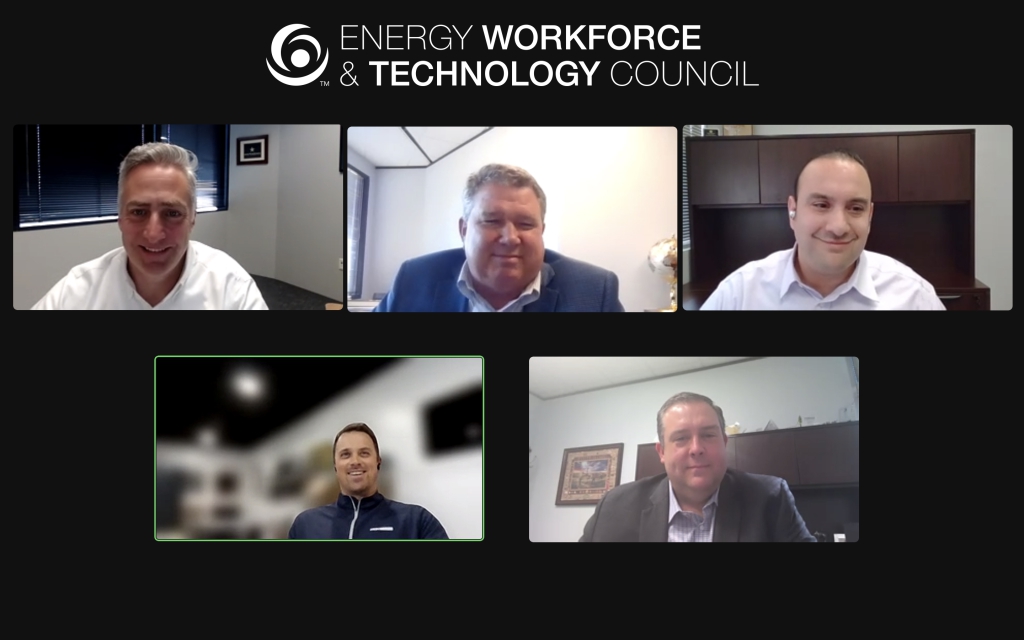
With the recently announced EPA methane rule, the Energy Technology and Government Affairs committees organized a webinar featuring experts discussing the rule’s implementation, the technologies employed for compliance and future expectations for the industry. Jack Belcher, Cornerstone; Dan Romito, Pickering Energy Partners; and Scott McCurdy and Angel Esparza, Encino Environmental Services, each gave overviews on their respective segments, followed by an extensive Q&A moderated by Energy Workforce President Tim Tarpley.
Business Opportunities & Challenges
Belcher addressed the business opportunities and challenges tied to the EPA’s final rule on methane emissions standards. He acknowledged the diverse reactions within the industry, stating, “Some of the Energy Workforce & Technology Council members, especially those who perform methane detection and mitigation services, are going to benefit from this rule. Other members, maybe some of the smaller companies, may struggle with some of its requirements that are considered to be burdensome and expensive.” Despite controversies, Belcher anticipates the rule — with potential tweaks — will remain amid global pressure for emissions reduction.
Data Collection
Romito highlighted significant shifts in industry practices, focusing on changes in detection frequency and record-keeping mandated by the updated rules. He pointed out, “This is a dramatic shift in how we have traditionally done things as an industry. There’s greater granularity and increased frequency that is mandated due to the updated rules.” Romito highlighted the move towards electronic reporting and the discontinuation of manual paperwork, signaling a broader transition in industry reporting methods.
Moreover, he discussed the methane tax implications, emphasizing the potential impact on smaller private operators. Romito underscored the interconnectedness of regulatory aspects and the need for companies to align with data reporting standards, and discussed international dimensions like OGMP 2.0, stressing the shift towards real-time continuous methane monitoring.
Methane Detection Technologies
McCurdy outlined two primary drivers for methane emissions monitoring: compliance and voluntary initiatives. He reviewed conventional compliance methods like handheld OGI cameras and sniffer technologies and delved into voluntary initiatives such as OGMP and consortia like the Environmental Partnership. McCurdy discussed a diverse array of sensor technologies, including satellites, planes, drones, fixed cameras, laser towers, point sensors and handheld OGI devices. He emphasized that recent regulations enable a wide range of technologies to be part of compliance and voluntary programs, provided they meet the necessary requirements.
Esparza explained how the new regulations encourage alternative methods based on detection thresholds and frequency, aiming to reduce operator exposure and enhance emissions identification. He highlighted the tiered categorization of technologies based on emission detection capabilities and introduced the “interim periodic matrix,” allowing technology improvements over two years with quarterly monitoring. Esparza also touched on flaring requirements, emphasizing the need for 95% or better combustion destruction or removal efficiency. Overall, the speakers emphasized the complexity and revolutionary impact of the rule on the industry, urging operators to align with evolving EPA standards.
During the wide-ranging Q&A, the speakers addressed a number of audience questions on the impact to industry in the short and long term, details of the monitoring qualifications and the likelihood of the rule surviving in its current form should there be a change in the White House.
Energy Workforce will continue to review the final rule and communicate best practices for the sector via its committees. For companies interested in speaking directly to legislators about the rule’s impact on their companies, register for the Washington D.C. Fly-In on February 5-7.
If you would like to view the webinar replay, contact Senior Director Energy Policy Maria Suarez-Simmons.
Maria Suarez-Simmons, Senior Director Energy Policy, writes about industry-specific policies for the Energy Workforce & Technology Council. Click here to subscribe to the Energy Workforce newsletter, which highlights sector-specific issues, best practices, activities and more.




